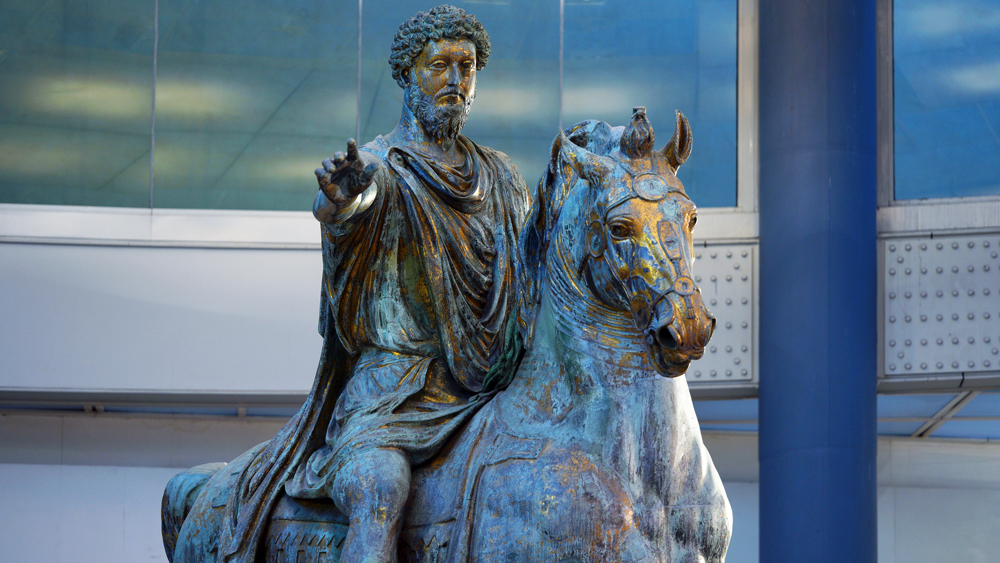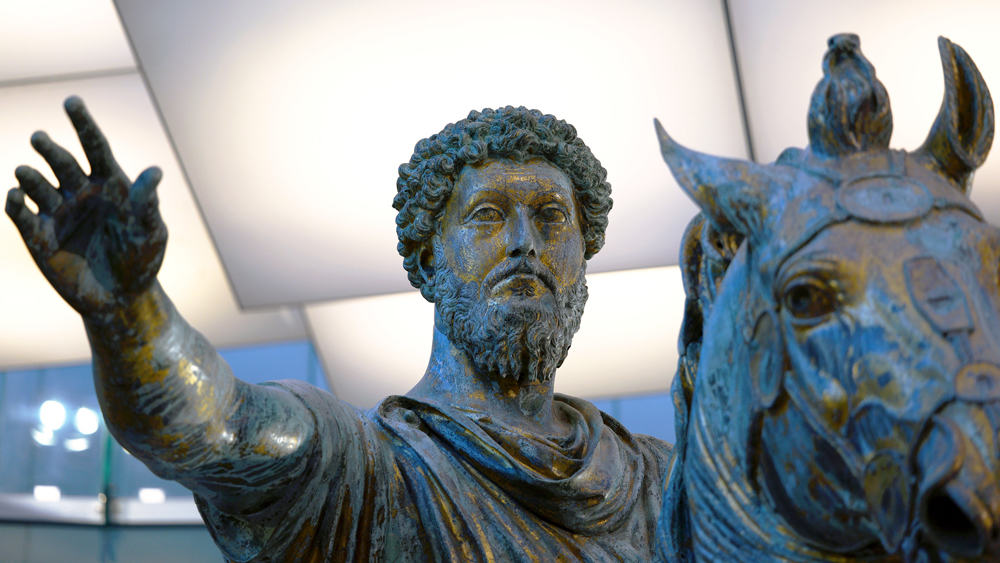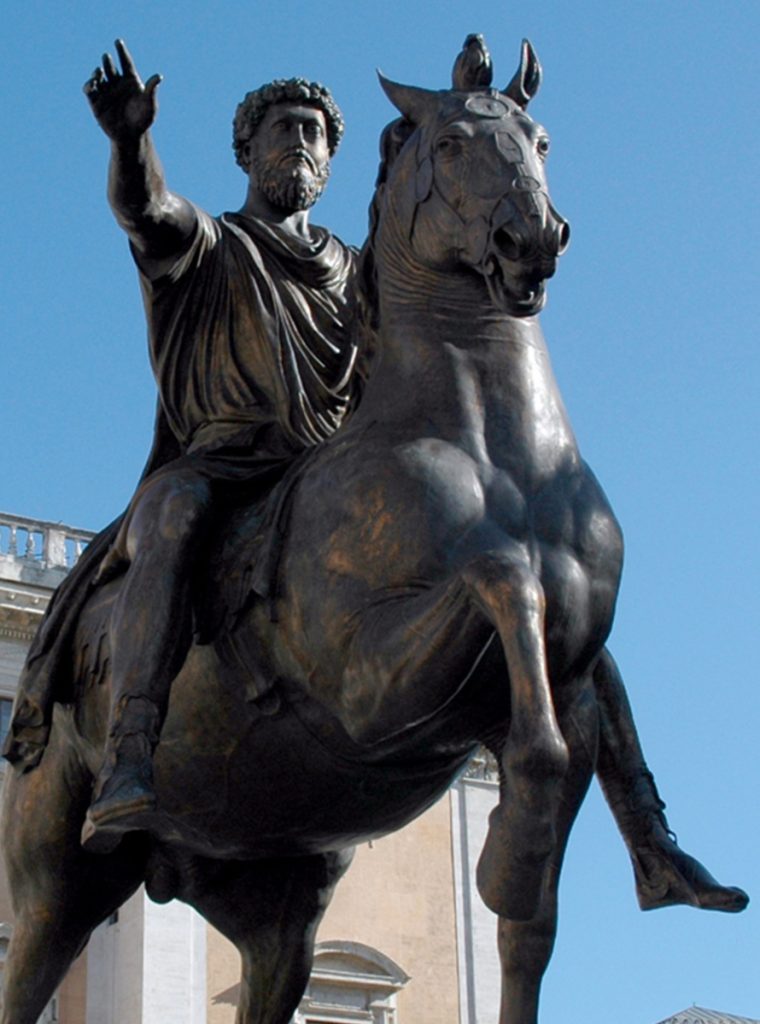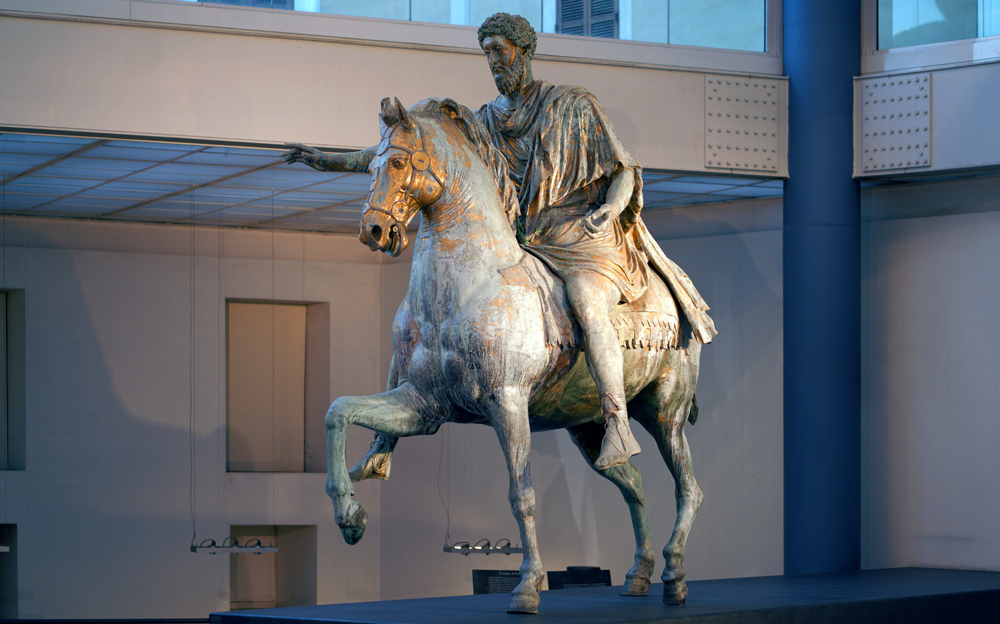Introduction

On the Capitoline Hill in Rome, stands an ancient Roman equestrian statue, which is the Marcus Aurelius statue. This statue is made of bronze and reaches a height of 4.24 meters, representing outstanding artistic and cultural achievements during the ancient Roman Empire. This article will delve into this magnificent statue, understanding its history, artistic value, and cultural significance.
Aurelius: The Wise Emperor of Ancient Rome
Marcus Aurelius was a highly respected ancient Roman emperor who ruled from 161 to 180 AD. Aurelius was a wise ruler known as the ‘philosopher emperor’. His reign was full of challenges, but he is known for his wise, brave, and thoughtful leadership style. His work “The Record of Meditation” remains a highly respected philosophical and moral guide to this day.

The Creation and History of Statues
The Marcus Aurelius Statue is believed to have been created between 175 and 180 AD, and the creator has yet to have a conclusive record. The material used to make this statue is bronze, which is a highly valuable material in ancient art. It is 4.24 meters tall and showcases the artistic level of the Roman Empire with astonishing precision and craftsmanship.
This statue was originally located on Capitolinus Hill in Rome, on the square of Max Aurelius, and is a highly respected location. However, over the long years of history, it has undergone multiple moves and preservation tasks. Today, in order to protect this precious cultural heritage, the original has been moved to the Capitoline Museums, and its location on the square has been replaced by an accurate replica.

The Artistic Value of Statues
The equestrian statue of Max Aurelius is considered the pinnacle of ancient Roman sculpture art. It is known for its outstanding carving techniques and realistic expressive power. Here are some artistic features of the statue:
Realistic expressiveness: The statue of Max Aurelius showcases the elegance and strength of his mount, as well as his confidence and ruling ability. His facial expression is contemplative and solemn, reflecting his wisdom and calmness.
Precision of details: The decoration and equipment details on the statue are very precise, from the fur texture of the horses to the military uniform of Aurelius, all demonstrating the sculptor’s high attention to details.
Art style: The statue reflects the classic art style of ancient Rome, while also influenced by ancient Greek sculpture, integrating elements of rationality and beauty.
Cultural significance and symbolic themes
This statue is not only a work of art, but also carries profound cultural and symbolic significance:
Exemplary Leader: Max Aurelius is regarded as an outstanding leader and philosopher, and his statue becomes a model that leaders should emulate. It symbolizes wisdom, courage, and just governance.

The Glory of the Roman Empire: The reign of Max Aurelius is considered a glorious period of the Roman Empire, and this statue represents the cultural and political achievements of this period.
The Combination of Philosophy and Military: Max Aurelius is a famous philosopher whose statue combines philosophy with military leadership, emphasizing the importance of knowledge and wisdom in leadership.
Conclusion
The Marcus Aurelius Statue is a precious heritage of ancient Roman art and culture. It represents the wisdom and leadership of an outstanding emperor, as well as the glorious history of the ancient Roman Empire. This statue is not only a bronze sculpture, but also a symbol of culture, history, and art, inspiring people to contemplate and respect ancient Rome. It is also a continuation and inheritance of ancient wisdom in the modern world, forever gazing at Capitolinou Mountain and witnessing the passage of time.

